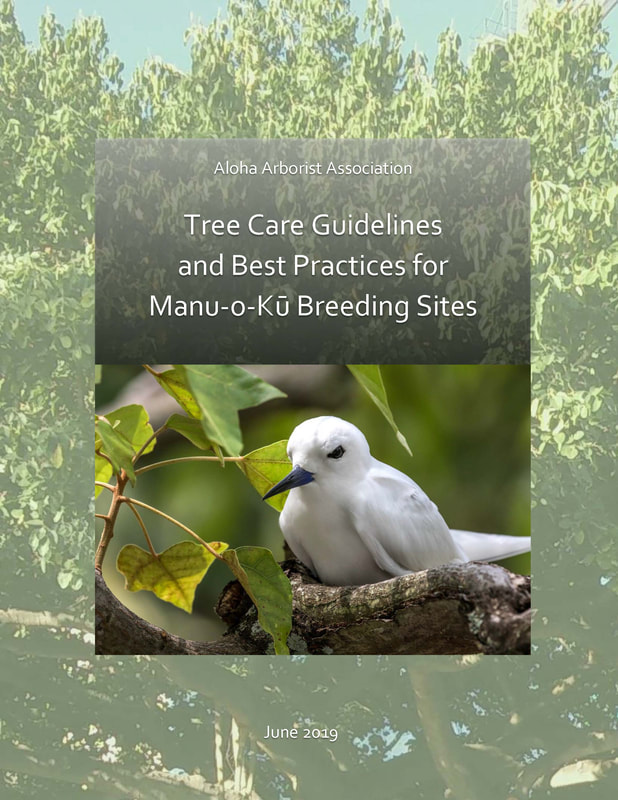Tree Trimming Information
Tree trimmers have a delicate relationship with manu-o-Kū. If trimming isn't done with care, nesting terns or chicks may be injured or eggs destroyed. A chick that falls from its nest to the ground will likely die because either the parents won't be able to care for it or it may be attacked by a predator. However, tree trimming can actually be beneficial to manu-o-Kū. Trimming can lead to a scar or cup to be formed in the branch. This creates an ideal nesting site that will protect the egg and chick. Keeping a tree trimmed can also make it easier for adults to fly in and out of the tree. Tree trimming may be one explanation for why there are so many manu-o-Kū in Honolulu, but it must be done with the utmost care to ensure no nesting sites are being destroyed.
